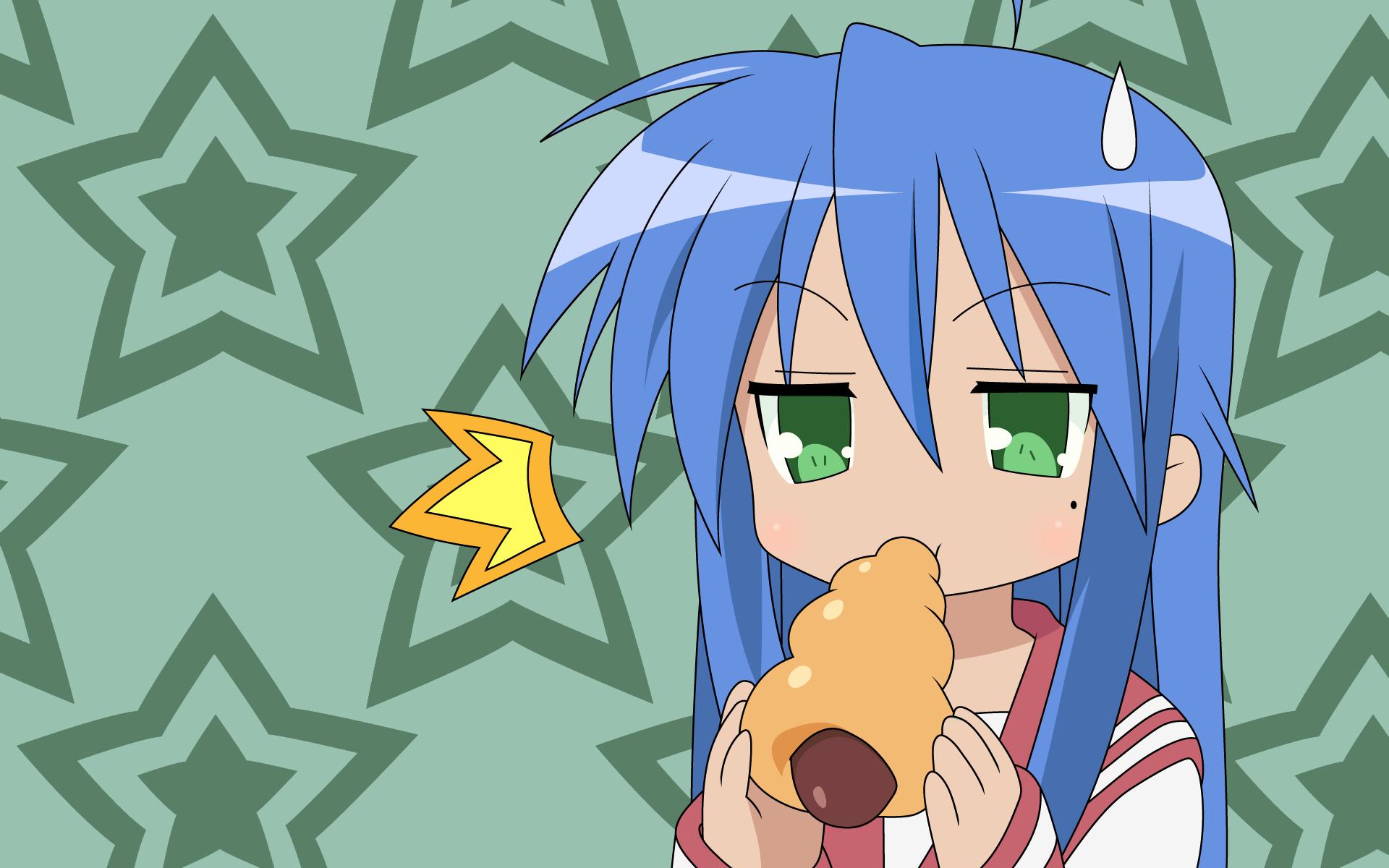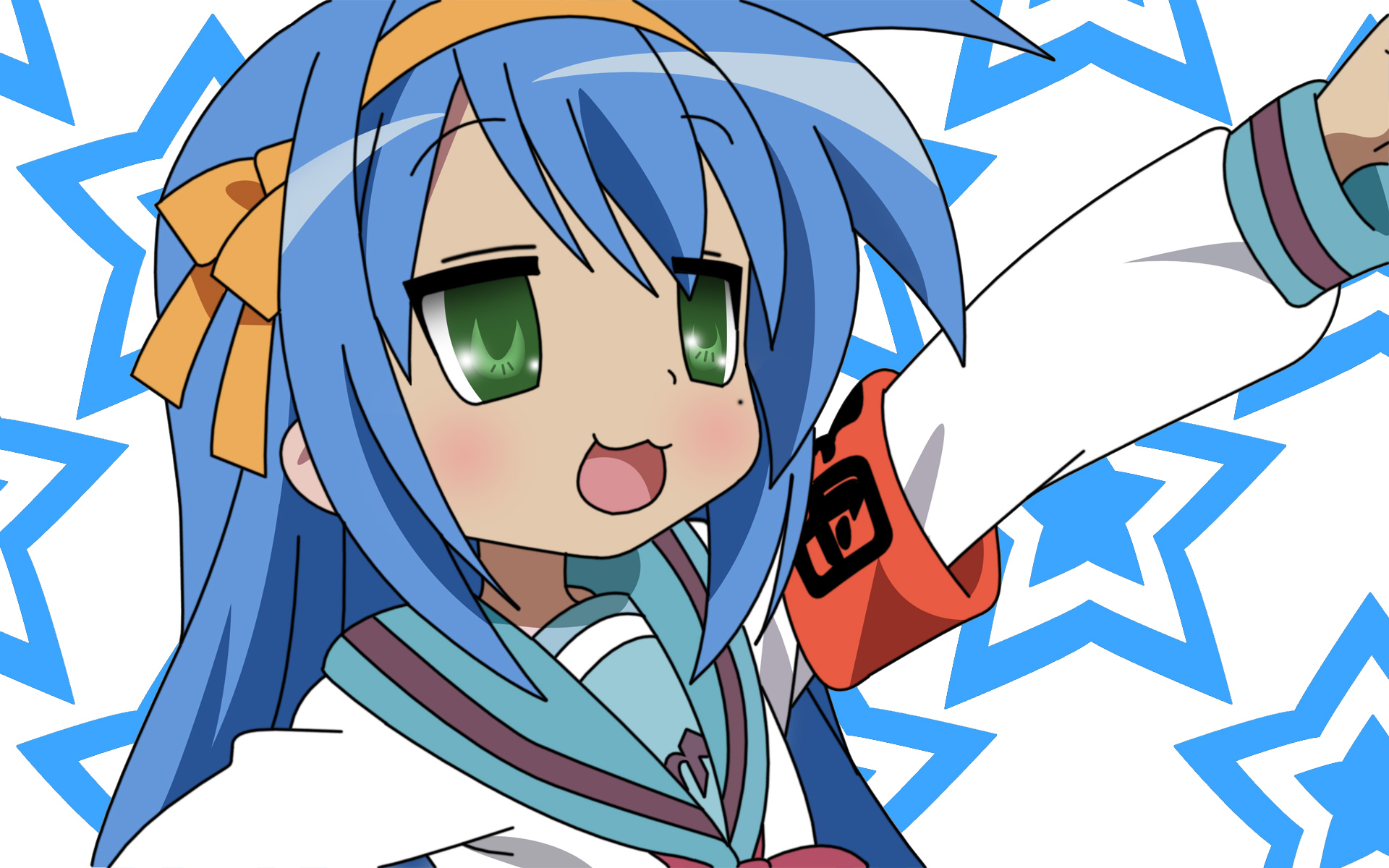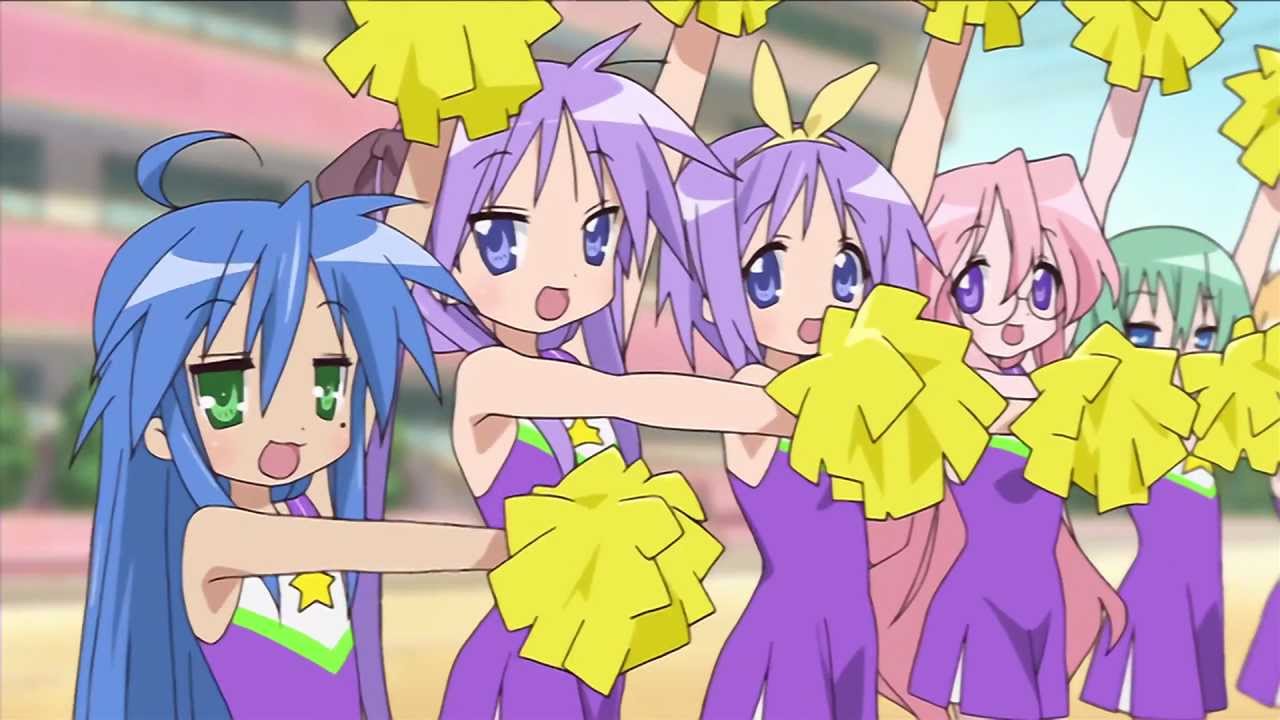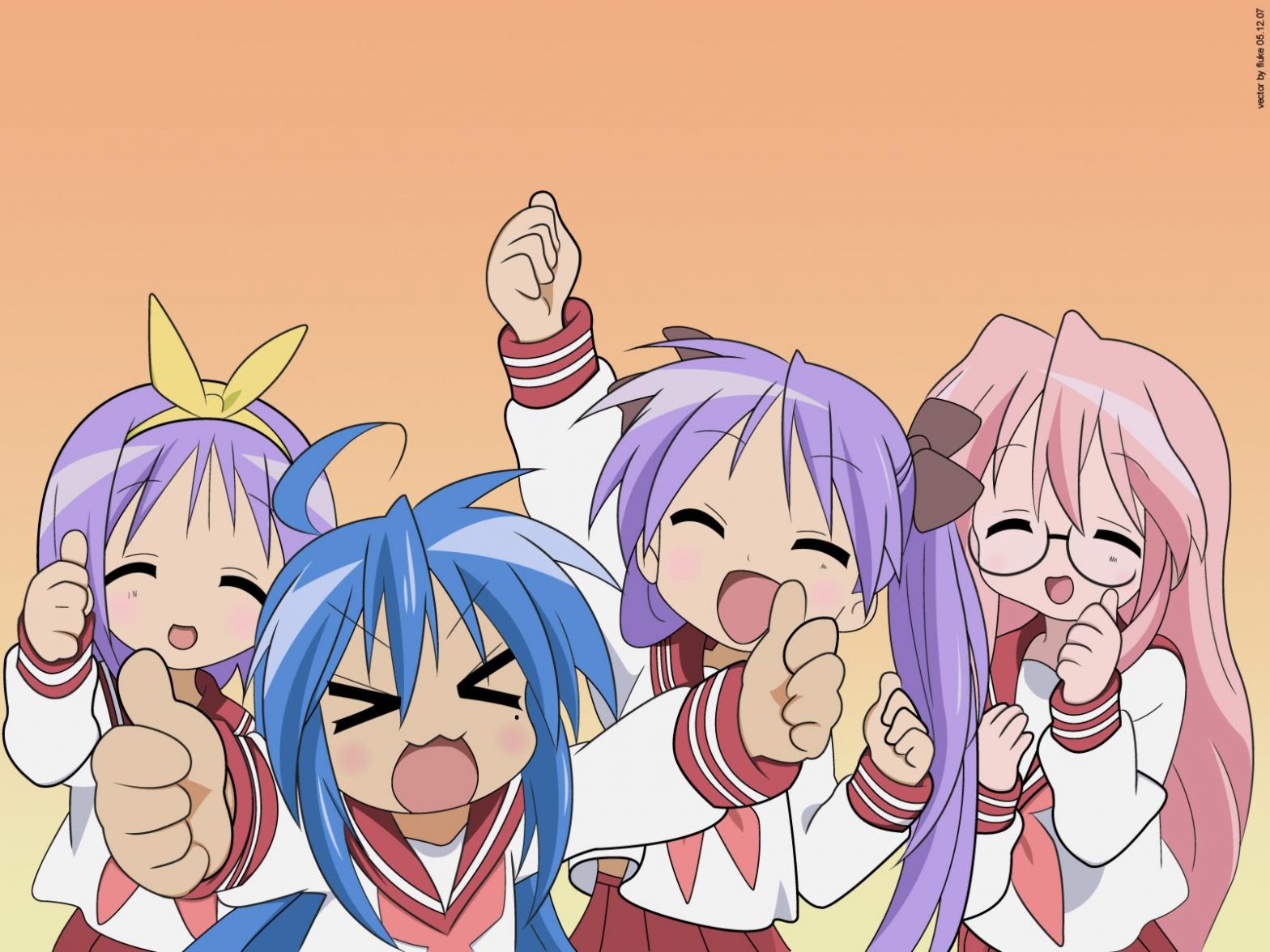Lucky Star began its two cour run in Spring of 2007. The series was produced by Kyoto Animation which at that time had come off strong from the 2006 success, Suzumiya Haruhi o Yuutsu otherwise known as The Melancholy of Haruhi Suzumiya.
The thing with Lucky Star is that it’s really a hit or miss for any viewer. I don’t think there is a way to confidently recommend this anime for anyone simply because it takes a certain type of humor to fully appreciate the series.
Lucky Star has the simple premise of four high school girls going through the day and pointing out the nuances of every day life. Essentially, the entirety of the show revolves around how simple life is.

The first ten minutes of the first episode for instances focuses on the discussion with the main character Konota Izumi describing how she eats a chocolate cornet. The discussion goes on when her friend explains that her way of eating a chocolate cornet is completely different from how Konota eats it. Nothing exceptional happens throughout this discussion. Instead, the focus is simply on how people live life. The essence of the comedy of Lucky Star is how the viewer is meant to relate to whatever it is that Konota and the gang are doing or discussing. Often, a character in the show points out different odd behaviors that we tend to do as well. Another character will agree and being in the same position as that character makes the entire situation funny. The resulting product of this is an oddly realistic slice of life that really focuses on the details of every day living and the behavior of people.

Aside from the realism, the show focuses on the otaku and anime culture in Japan. Because of this, the audience of the show is further limited not only by the type of comedy and humor but also by the amount of knowledge one has about the anime industry in general. Scattered throughout the show are references to anime owing to Konota being an otaku and avid fan of all things anime. Her behavior throughout the series is meant to mirror that of otakus in real life as well again drawing much of its humor from the realism of situations. Coupled with the otaku culture, references to quite a number of anime will only be apparent to people who have actually seen the anime in the past making it hard for anybody other than an otaku to fully appreciate the series. Konota’s general excitement towards anything related to the industry and all her references to older anime is meant to resonate with the audience of the show while at the same time pointing out just how odd some behaviors truly are.
Alongside the focus on the anime industry, the show also highlights practices in Japan. It looks into different practices that are distinctly Japanese and again points out the nuances of each of these practices. This again further limits the audience of the series to those who possess a certain level of knowledge and understanding of Japanese culture. While this normally wouldn’t be a problem due to it airing in Japan to begin with, a good portion of anime viewers who live outside of Japan may quite understand the topics being discussed due to lack of knowledge.
All that being said however, I found myself thoroughly enjoying Lucky Star from start to end. While the audience may be limited by quite a number of factors, I can say that I probably tick off all the boxes resulting in an enjoyable watch. While not offering much in terms of action and tension which has become a staple in any form of visual entertainment today, Lucky Star managed to capture my attention by being utterly simple and devoid of excitement. The simplicity made it easy to come in and out of watching the series and the realism behind the topics made Lucky Star relatable.

As an aside, Lucky Star’s opening is both annoying and extremely entertaining and catchy all at the same time. Coming fresh off Suzumiya Haruhi no Yuutsu and the well received dance of Hare Hare Yukai, Lucky Star presents a dance of its own that really leaves a lasting impression.
